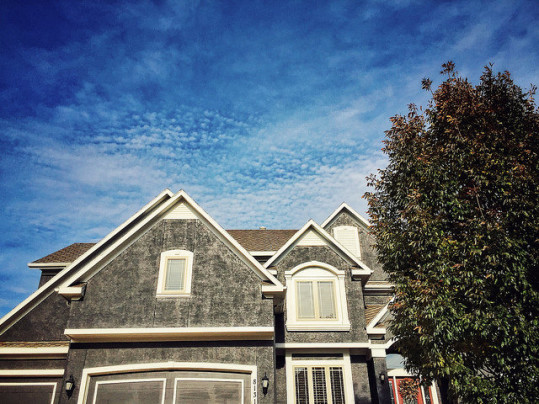Despite some signs of weakness in the overall economy, the housing market continues to make gains. The latest in a string of positive releases is the U.S. Census Bureau and the Department of Housing and Urban Development’s New Residential Sales Report For December. According to the numbers, sales of newly built single-family homes rose 10.8 percent over the previous month’s estimate. That means, at the end of the year, there had been a total of 501,000 new homes sold in 2015 – a 14.5 percent increase over 2014. Sales in December likely benefited from unseasonably warm weather in areas usually slowed by winter weather. In fact, the Midwest lead all regions with a 31.6 percent rise over the month before. Other regions, such as the West and Northeast, also saw double-digit gains, though the South was virtually flat. Sales were also supported by an increase in the number of new homes available for sale. Rising inventory offers buyers more choices and helps relieve upward pressure on prices. To that point, the median price of a new home dropped in December to $288,000, 4.3 percent lower than one year ago. More here.
Archive for January 2016
Mortgage Rates Fall For 3rd Straight Week
According to the Mortgage Bankers Association’s Weekly Applications Survey, mortgage rates continue to defy expectations, falling for the third week in a row. In fact, rates were down across all loan categories including 30-year fixed-rate loans with both conforming and jumbo balances, loans backed by the Federal Housing Administration, and 15-year fixed-rate mortgages. The drop led to another bump in home loan demand, with both the refinance and purchase indexes seeing large gains. Refinance activity – which is generally more sensitive to rate fluctuations – was up 11 percent over the previous week, while demand for loans to buy homes rose 5 percent over the week before. Joel Kan, an MBA economist, told CNBC that mortgage rates are being affected by volatility in the financial market. “As a result of more financial market volatility and continued flight to quality by investors, mortgage rates have decreased 18 basis points since the first week of January 2016,” Kan said. That drop has rates at their lowest point since last October. The MBA’s weekly survey has been conducted since 1990 and covers 75 percent of all retail residential mortgage applications. More here.
Home Prices Continue To Show Strength
Following the financial crisis and housing crash, there were many years when analysts wondered when the housing market would, once again, be among the main drivers of the economy. Now, after its best year since home prices plummeted, housing is showing strength just as other parts of the economy seem to have slowed. For example, the latest S&P/Case-Shiller U.S. National Home Price Index shows November home prices were 5.3 percent higher than year-before levels – an improvement over October when they were 5.1 percent higher than one year earlier. David M. Blitzer, managing director and chairman of the index committee at S&P Dow Jones Indices, said the results show housing continues to improve. “Home prices extended their gains, supported by continued low mortgage rates, tight supplies, and an improving labor market,” Blitzer said. “Sales of existing homes were up 6.5 percent in 2015 vs. 2014, and the number of homes on the market averaged about a 4.8 months’ supply during the year; both numbers suggest a seller’s market.” He went on to say that though the consumer portion of the economy, like automobile sales and housing, were strong last year other parts of the economy, such as the oil and energy sector, have slowed. According to Blitzer, housing’s growth will not be “enough to offset all of these weak spots.” More here.
Young Buyers Will Shape Tomorrow’s Homes
More young Americans between the ages of 25 and 34 are living with a parent than at any time in the past 30 years. In fact, 15 percent of young adults are living with their parents, which is 3 percent above the previous high. That’s approximately 1.3 million people who would normally be forming households of their own, according to Rose Quint, the National Association of Home Builders’ vice president for survey research. Quint, speaking at a conference on housing preferences for millennials, said first-time buyers will make a significant impact on the types of homes that are being built once they return to the market. In recent years, the lack of first-time home buyers active in the housing market has gotten a lot of attention. And despite new mortgage programs and looser requirements aimed at increasing the number of first-time buyers, the new home market continues to be dominated by move-up buyers. Quint believes, because millennials are a generation immersed in technology, they will demand smaller, smarter, more energy efficient homes when they decide to buy. They are also interested in home organization and workspaces, workable kitchens, outdoor living areas, and casual spaces. Typically around 40 percent of home buyers, first-time buyers represented just 30 percent of home sales last year. More here.
December Home Sales Surge Nearly 15%
Sales of previously owned homes surged in December, according to new numbers released by the National Association of Realtors. The 14.7 percent sales spike was caused, in part, by delayed transactions that would normally have closed in November but were slowed by new mortgage disclosure rules. Regardless, Lawrence Yun, NAR’s chief economist, says the two months together show sales ended the year at a healthy pace. “While the carryover of November’s delayed transactions into December contributed greatly to the sharp increase, the overall pace taken together indicates sales these last two months maintained the healthy level of activity seen in most of 2015,” Yun said. “Additionally, the prospect of higher mortgage rates in coming months and warm November and December weather allowed more homes to close before the end of the year.” Totals for 2015 show existing-home sales recorded their best year since 2006 and ended the year 7.7 percent higher than at the close of 2014. Despite the strong end to the year, however, Yun says low for-sale inventory, rising mortgage rates, and tepid economic expansion may mean sales numbers will struggle to replicate this year’s gains in 2016. Also in the report, regional results found large increases in all four regions, with the West leading the way with a 23.2 percent sales improvement in December. More here.
Home Construction Has Best Year Since 2007
New numbers from the U.S. Census Bureau and the Department of Housing and Urban Development show that 2015 was new residential construction’s best year since 2007. In fact, housing starts – which refer to the number of groundbreakings – were up nearly 11 percent last year from the year before. That’s good news for the housing market, as low for-sale inventory has been putting upward pressure on home prices and affecting affordability conditions. But despite the fact that both housing starts and permits to build new homes saw double-digit increases over the year before, the month of December saw a slight downturn from November’s pace. Specifically, the number of single-family houses that began construction during the month fell 3.3 percent from the month before. Building permits – which are a good indicator of future home construction – also fell, though the decline was primarily among multi-family housing units. Permits to build new single-family homes, on the the hand, actually rose, climbing 1.8 percent month-over-month. The rise in permits could indicate that, though slow during the winter, housing starts will pick back up in the spring. More here.
Average Mortgage Rates Hit 3-Month Low
According to the Mortgage Bankers Association’s Weekly Applications Survey, average mortgage rates fell last week across all loan categories, including 30-year fixed-rate mortgages with both conforming and jumbo balances, loans backed by the Federal Housing Administration, and 15-year fixed-rate loans. The drop brought mortgage rates to their lowest level since last October. Michael Fratantoni, MBA’s chief economist, told CNBC rates fell because of volatility in global stock markets. “Global stock markets plunged last week, led by weakness in China, but further weakened by continued sharp drops in oil prices,” Fratantoni said. “Investors drove down Treasury yields in a flight to safety, and mortgage rates fell to their lowest level since last October.” As a result, refinance activity – which is most sensitive to rate fluctuations – spiked, rising 19 percent from the week before. Purchase application demand, on the other hand, slipped 2 percent, though it remains 17 percent higher than the same week one year ago. The MBA’s weekly survey has been conducted since 1990 and covers 75 percent of all retail residential mortgage applications. More here.







